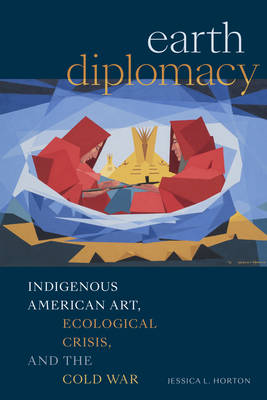
- Afhalen na 1 uur in een winkel met voorraad
- Gratis thuislevering in België vanaf € 30
- Ruim aanbod met 7 miljoen producten
- Afhalen na 1 uur in een winkel met voorraad
- Gratis thuislevering in België vanaf € 30
- Ruim aanbod met 7 miljoen producten
Zoeken
Earth Diplomacy
Indigenous American Art, Ecological Crisis, and the Cold War
Jessica L Horton
Paperback | Engels
€ 47,45
+ 94 punten
Omschrijving
In Earth Diplomacy, Jessica L. Horton reveals how Native American art in the mid-twentieth century mobilized Indigenous cultures of diplomacy to place the earth itself at the center of international relations. She focuses on a group of artists, including Pablita Velarde, Darryl Blackman, and Oscar Howe, who participated in exhibitions and lectures abroad as part of the United States's Cold War cultural propaganda. Horton emphasizes how their art modeled a radical alternative to dominant forms of statecraft, a practice she calls "earth diplomacy" a response to extractive colonial capitalism grounded in Native ideas of deep reciprocal relationships between humans and other beings that govern the world. Horton draws on extensive archival research and oral histories as well as analyses of Indigenous creative work, including paintings, textiles, tipis, adornment, and artistic demonstrations. By interweaving diplomacy, ecology, and art history, Horton advances Indigenous frameworks of reciprocity with all beings in the cosmos as a path to transforming our broken system of global politics.
Specificaties
Betrokkenen
- Auteur(s):
- Uitgeverij:
Inhoud
- Aantal bladzijden:
- 400
- Taal:
- Engels
Eigenschappen
- Productcode (EAN):
- 9781478030492
- Verschijningsdatum:
- 23/08/2024
- Uitvoering:
- Paperback
- Formaat:
- Trade paperback (VS)
- Afmetingen:
- 152 mm x 226 mm
- Gewicht:
- 635 g

Alleen bij Standaard Boekhandel
+ 94 punten op je klantenkaart van Standaard Boekhandel
Beoordelingen
We publiceren alleen reviews die voldoen aan de voorwaarden voor reviews. Bekijk onze voorwaarden voor reviews.








